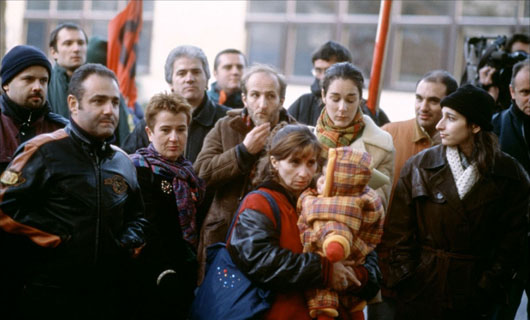
By Jacques Rancière
Originally published as ‘Il est arrivé quelque chose au réel’, Cahiers du cinéma, n° 545 (April 2000)
What makes the vision of Nadia et les hippopotames (Dominique Cabrera) so hard to tolerate? The film whispers us its response: simply the “hippopotames”, those syndicalists who are caught in their archaic stereotypes of justice and social struggles against which, in november 1995, a big part of the progressive intellectual opinion voiced their agreement with Alain Juppé. The response is hardly convincing. We don’t feel such embarrassment while watching the young associate workers in Charbons Ardents (Jean-Michel Carré), although their arguments, characters and story repeat a scenario that has been playing out, almost invariably, since one hundred fifty years. The intolerable is not in the militant outdatedness but in that which pretends to make it look anew: this turn, typical of militant fiction, that wants to redeem politics with the real and humanize the actors of social conflicts, while enumerating the real-life contradictions separating the militant from his partisan identity: men and women, politics and sex, militantism and everyday life, real-life contradictions emblematized in the figure of the lumpen-proletariat, opposing the stubborn strength of day-to-day life with all collective undertaking. Nadia and her baby showing up at a militant meeting is the most recent incarnation of this character of which disenchanted-militant (Georg) Büchner’s Marie was the prototype, and splendorously illustrated by perverse-militant Bertolt Brecht’s Groucha or Mother Courage. The vain gesticulation with which Nadia wants to manifest her existence and attest to the humanity of her companions presents us with something like the brain-dead coma of this glorious figure.
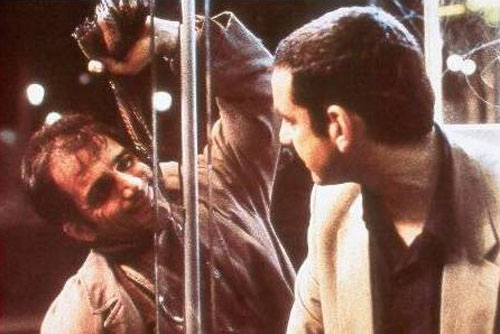
What is at stake here is not the “end of politics”, but rather the end of a certain idea of political film – a certain entanglement of the real and the fictional. The paradox of the militant genre is this: it’s fiction that has to receive the marks of reality rendering it credible. The double ricochet of militant fiction (politics and life) is opposite to the double recourse that gives fiction its consistency. In fiction the real is attested to in two ways; by the recognition of the typical traits that compose the characters who look like those we know; and, on the contrary, by the effect of surprise, the aberration of characters and adventures imposing their reality by the fact that they’re unexpected. This double ricochet is at the heart of what we can call “minor fiction”, the kind that French cinema holds high, in the shade of big stories of intrigue, power and terror. A film like La Vie Moderne (Laurence Ferreira Barbosa) illustrates this formula well: characters stuck in their contemporary ethos; seized in a moment of crisis submitting them to a double confrontation: meeting several typical social figures, and the pure call of the unforeseen delivering them to chance meetings or embarking them in the intrigue of a beautiful mythomaniac. Nadia’s nocturnal escape of militants belongs to the same logic as Claire’s Parisian escapade or Jacques’ delirious search in La Vie Moderne. The same double game of the real of recognition and the real of surprise structure the indubitably militant scenario showing the contradictions of the people and the more likeable scenario of the family fiction, seized at the point of “disjunction” of characters, between socio-cultural identity and fantastic tale. This is the real of fiction: this game of complementarities and displacements between the familiarity of signs of recognition and the invention of moments of madness, thats seem to be paralyzed today. And the television broadcast of a few emblematic films of the nouvelle vague permits us to see this. The success of these films has held up in the way that the subversion of the characters and intrigues of the big genres has been able to identify with the explosion of new ways of thinking and feeling. The liberty taken by Michel Poiccard (in À bout de souffle) in regards to the normal behavior of fictional characters engaged in similar situations identified itself with the real of the behaviors of a new generation. This understanding between two “nouvelles vagues” remains the paradise lost, the fabulous body of which the minor fiction doesn’t stop putting together or taking apart the parts, looking for, like some piece of eistensteinian gold, the exact measure of sociological proximity and fantastic distance that can extract from the real of fiction a never before seen face and tone.
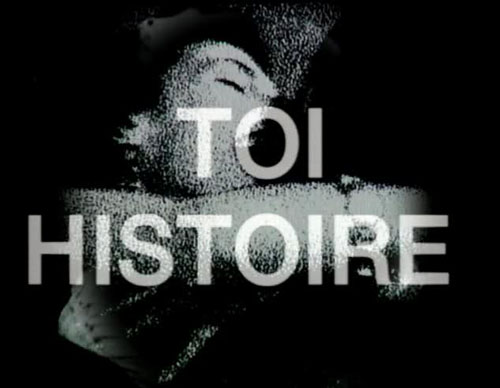
Between the paradise lost of the Nouvelle Vague and the ordinary of the new French quality that emerged from it, between the militant euphoria of the 1960’s and the exhausted fictions of militantism, it’s too convenient to say that the difference is made out of the end of political utopias and historical promises. Those who compare (Jean-Luc) Godard’s A bout de Souffle with Histoire(s) du cinéma or (Chris) Marker’s Joli Mai with Level Five will draw another conclusion. It’s not us who no longer tolerate politics. It’s politics which no longer tolerates the remnants of the real of fiction. Perhaps because some filmmakers have in the meantime invented a new mode of fictioning appropriate for denouncing the socio-fictional compromise that links the minor fiction to modes of presentation of a depoliticized politics. The socio-fictional compromise is the complicity between the pseudo-evidence of the separation between document and fiction, and the perpetual exchange of the forms of belief they give rise to. Against the real of fiction that support this compromise, the political fictions of the real have succeeded in exploiting the paradoxical advantage that is proper to the documentary genre: where the real is taken as an acquired given, there is no need to attest to it fictionally, no need to produce the sentiment. Where it is supposedly given, one can invest in rendering it problematic, one can invent its problem. Reprise (Hervé Le Roux) gives a clear demonstration of this privilege. This woman’s face, in which we can’t make out if the cries of anger express a militant conviction or a visceral reaction, this lost face whom Claire, the militant, and Nadia, the uncultured, share features with, is not there to be composed. It is already there in the film-as-witness. And the only interesting thing to do from then on is finding out how the meeting between the voice and this communal history that has taken place in this space, during this time, is done and undone. Because the face and the voice are already there, the search for the character or the lost object can become the invention of a new object. The real of fiction ties politics and fictional narrative together in the consensual circle of mutual attestations of reality and signification. Political fictions of the real, released from the duty of attestation, can tie hem together on a more radical level: that of forms structured from the search for truth. And they can tie hem together in a mode that is no longer consensual but polemical, in the struggle for the appropriation of forms. This is what emblematizes, in Histoire(s) du cinéma or Level Five the reference to “I shall never forget…” that opens Otto Preminger’s Laura. This impossible sentence, because it is spoken by someone who dies at the end of the story and who thus cannot narrate it, symbolizes this mode of fictional research which creates, from the supposition of a reality simply recalled, a completely new object, resting on its only proper logic. In order to research a century, stalinism, the constrained suicide of the habitants of Okinawa or the extermination of the Jews in Europe, Histoire(s) du cinéma, Le Tombeau d’Alexandre, Level Five or Shoah have to overtake, from some great literary or cinematographic fictions, this form of inquiry that creates its own object.
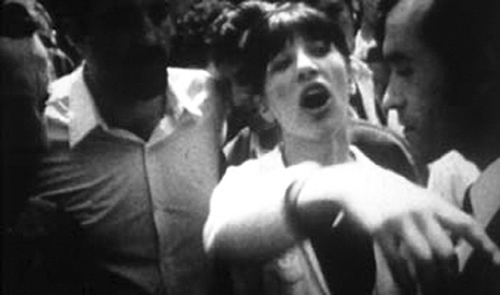
In these films, and some others, something has happened to the real. It doesn’t recognize itself anymore. This loss of signs of recognition has nothing to do with what we keep on hearing: that the real is dissolving in pure image, in itself swallowed up by virtual screens and digital code, or that the real has definitely become irrepresentable of the century’s horrors. A recent debate on Shoah (Claude Lanzmann) and the “absent archive” has shed some light on the terms of the problem. The “absent archive” designates two things: the traces destroyed by the exterminators, but also the “historical documents” of which the filmmaker has deliberately refused the effect of the real, in order to construct another reality with the here and now of places and words. It’s not that the extermination is irrepresentable and that its horrors forbid fiction taking the place of absent images. It’s that it’s not representable as if, by way of fictional bodies giving a human face and historical credibility to the executioners and the victims. What has to be represented is not the executioners and the victims, but the process of extermination and the elimination of its own traces. And this representation is not an attestation. It’s not a matter of proving that it has taken place, but of showing, by way of a singular research, how it has taken place.
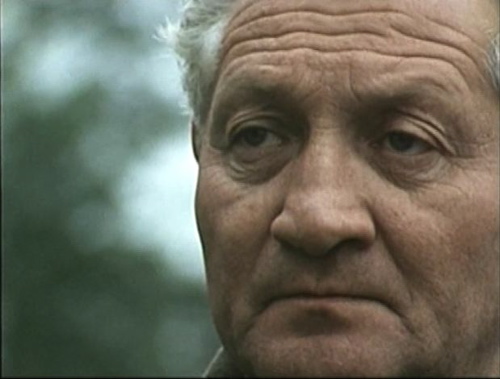
“The story begins in the present..”. The provoking sentence opening Shoah means this: the real of this how is always yet to come, the archive doesn’t stop constituting itself on a terrain that is always blank, like the clearing of Chelmo which represents the extermination by way of the pastoral tranquility resulting from the ultimate camouflage of the massacre, by way of the silence resonating with that of the process itself. Schwer zu erkennen says the survivor Simon Srebnik: hard to recognize, but it was here. This here is manifested in the present by a quality counter to all marks of recognition: by the calmness and the silence resembling those of yesterday (Das war immer so ruhig hier), by the fact that yesterday, when bodies were cremated, like today, in the present of the filming, everyone is doing their work. This similitude, opposed to the as if of the real of fiction, is obviously not indifferent to it being spoken in German. The German, with a bit of yiddish mixed in, of the Polish Jew who has become citizen of Israel, this Jewish German, more wobbly than the language of Unterscharführer Franz Suchomel, indicates by contrast what is most unacceptable in La vita è bella (Roberto Benigni). The inadmissible is not in the fictionalization of what shouldn’t be, in the story of this father who convinces his son that it’s all just a game. It’s that the ricochet is precisely the relation between languages. The fiction of Benigni has a double function. It clears itself from its own risk, identifying the opposition of executioners and victims with the evident opposition between two sound worlds – the world of those who know how to smile and the world of those who can only cry – concentrating the real of the extermination in the materiality of the language, the “guttural” language that seems to be made up all naturally in order to make up the executioners. What makes the “fantasy” of Benigni unbearable is not the suffering of the exterminated Jews. It’s the German of the survivors that a filmmaker has made us listen to.
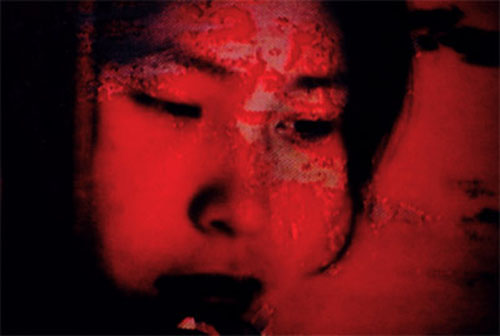
Something has happened to the real. It hasn’t moved towards the image. It has doubled itself. On one hand, it has moved towards its singularity without images, moved back to its distance and its opacity. On the other hand, it has moved closer towards the images that are present, staging the process. This re-staging of proximities and distances also dictates the more complex or sophisticated fictions. We can analyze this in the steps executed by the heroes in An American in Paris, in the Histoire(s) du Cinéma dealing with a Spanish republican victim, as well in the fictionalization of the computer reinventing the battle of Okinawa in Level Five. The problem here is not a matter of comparing methods and merits. It’s about finding out how some political fictions of the real have shattered the relations between the real and the fictional, past and present, History and the (hi)stories that at the same time dictated the separation of domains and their exchange of services. What has been challenged is the real of fiction. If the “militant film” genre is most obviously affected, it’s not because politics has ended. It’s because its non-naturality has become more evident, and because of the official attempts to dismiss it, and because of the new fictions that have measured up to its non-evidence. The minor fiction lives off the remnants that the official “end” and the new fictions of politics have left it. This form of vitality could reveal itself as precarious.
——————————————————————————————————————————————————————-
Translated by Stoffel Debuysere (Please contact me if you can improve the translation).
In the context of the research project “Figures of Dissent (Cinema of Politics, Politics of Cinema)”
KASK / School of Arts